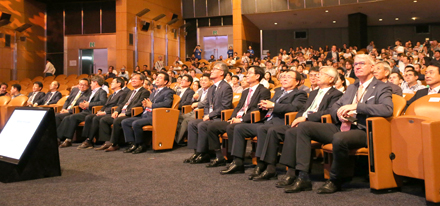
Engineering students from across Australia have been benefiting from exposure to the most up-to-the-minute technical developments and innovations in timber construction from across the globe. Forest and Wood Products Australia (FWPA) regularly sponsors students to attend the World Conference on Timber Engineering (WCTE) – one of the world’s most prestigious events in timber engineering, engineered wood products and the design of timber structures. Source: Timberbiz
For the last eight years, FWPA funding has allowed outstanding post-graduate students engaging in timber-focused research to apply for financial support for their attendance.
In 2018, eight students were selected and awarded a $3500 bursary to attend the event in Seoul, South Korea.
Alastair Woodard from FWPA’s WoodSolutions education program, said the initiative accelerates the career paths of emerging leaders amongst Australian engineering graduate and postgraduate students, through transfer of knowledge from leading global timber talent.
“We had meetings with each of the students about what they wanted to learn and who they wanted to meet, before introducing them to the relevant international timber experts. Knowing they can call upon these people right throughout their careers makes this such a valuable networking experience,” said Mr Woodard.
“Once back in Australia, the students returned to their universities and gave presentations about what they learned. There has been a great flow-on effect from bringing back their excitement, enthusiasm and knowledge and sharing it with their peers.”
Kristopher Orlowski, student at the University of Melbourne, said the knowledge gained through his attendance proved invaluable for informing his current research project.
Mr Orlowski is working with an industry partner on the development of a post-tensioned (strengthened or reinforced) timber-based prefabricated panelised structure. The aim of his research is to understand the limitations and develop solutions to advance the use of this novel form of construction.
“This system was originally developed to tie the structure down to the foundations for construction purposes,” explained Mr Orlowski.
“From the advanced research in this area presented at the conference, I’ve learned you can use this technology as a method of self-centering for earthquake design, which is a benefit we hadn’t considered.
“From a personal perspective, it was valuable to see the way people present their final work, because I’ll be presenting the findings and conclusions of my own thesis soon.”







